Product Glossary
Product glossary
4SI
Snap-In Retainer for ESP-4 Products.
Architectural
Products that work together as a system to provide a standalone signage solution with everything from mounting legs to connectors and trim.
Bleed Trim
For Flex Face signage, it covers the return of the frame, providing a seamless transition between the frame and the vinyl face.
Changeable Copy
Signage allowing users to alter displayed copy with movable letters.
CLRW (Channel Letter Raceway)
Used for mounting channel letters, providing a safe environment for wiring, hardware, and power supplies.
Corner Angle
Used to align Excellart frame pieces.
Custom Miter
An angled cut made across the face, or width, of an extrusion, typically less than 45 degrees.
DF (Double Face)
Signage with two faces.
Divider Bar
Divides cabinet face.
Extrusion
Process used to create objects of a fixed cross-sectional profile by pushing material through a die of the desired cross-section.
F
F-shape retainer (adds 5/8” to cabinet depth per side).
FCO (Flat Cut Out)
Typically cut from acrylic or aluminum, affixed to the outward facing surface of a rigid face.
FF
Larger F-shaped retainer (adds 1 5/8” to cabinet depth per side)
FF2
Largest F-shaped retainer (adds 2” to cabinet depth per side)
Flex Clip
Used to tension flex face material to the frame.
Flex Face
Flexible vinyl material for digitally printed logos and designs, tensioned to a frame system. Pros include versatility, wind resistance, light weight, and seamlessness.
Flex Frame
Frame designed for flex face material.
Frame
The main structure in creating a sign cabinet
Hinged Frame
Incorporates a hinged shape in the profile, allowing retainers to be hinged open.
IDS
Internal retainer system component series.
Integrated Frame
Flex face frames that integrate structure to the profile, allowing standalone use or as a structural member for double face flex frames.
Kerf
The space left in a material equal to the width of a saw blade.
Kerf-Cutting
The process where frames are partially cut, leaving kerfs, allowing flexibility in shaping.
LF
Narrowest retainer (adds 7/16” to cabinet depth per side).
Mill Finish
This is the description of the surface texture (or finish) of metal after the extrusion die process.
Miter or Reverse Miter
An angled cut made across the face, or width, of an extrusion, typically ranging from 0 to 45 degrees.
OD (Outer Dimension)
Is the x & y dimension of the sign frame.
Perimeter
The continuous line forming the boundary of the sign frame.
Piano Hinge
A low profile hinge system.
Push-Thrus
Typically acrylic letters pushed through a rigid face sign material and illuminated from behind.
Raceway
Used as a signage component to house and conceal wires, power supplies, and other electrical components.
Radius
Refers to the arc size of a corner, measured as the distance from the center point of a circle to the outside circumference.
Retainer Gusset
Used to align Excellart retainer pieces.
Rigid Face
Materials like expanded PVC, Polycarbonate, and aluminum used for rigid face signs. Pros include dimensional designs, ease of handling, and the ability to incorporate various design features.
SF (Single Face)
Signage with one face. Internal retainer system component series.
Splice Plate
Braces a seam on two adjoining pieces.
Standard Frame
Standard components that mate together with flat and square surfaces.
Standard Trim
Trim for Flex Face signage covering the return and a few inches on each side of the vinyl face.
Tension Bar
A textured bar that is wrapped by the flex face of a sign and then inserted into a flex clip in order to tension the sign face.
WM (Wall Mount)
Framing solution which mounts to a wall.
